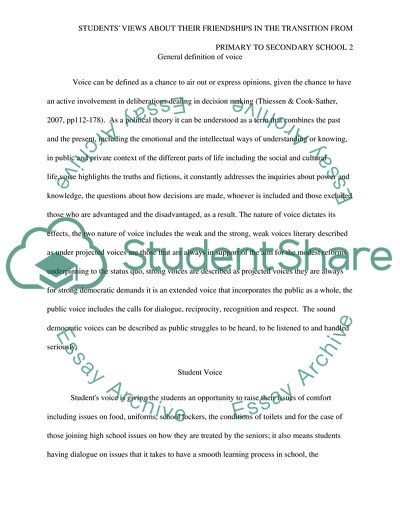Cite this document
(Students' Views about Their Friendships in the Transition from Primary Essay Example | Topics and Well Written Essays - 1500 words, n.d.)
Students' Views about Their Friendships in the Transition from Primary Essay Example | Topics and Well Written Essays - 1500 words. https://studentshare.org/education/1827305-students-views-about-their-friendships-in-the-transition-from-primary-to-secondary-school
Students' Views about Their Friendships in the Transition from Primary Essay Example | Topics and Well Written Essays - 1500 words. https://studentshare.org/education/1827305-students-views-about-their-friendships-in-the-transition-from-primary-to-secondary-school
(Students' Views about Their Friendships in the Transition from Primary Essay Example | Topics and Well Written Essays - 1500 Words)
Students' Views about Their Friendships in the Transition from Primary Essay Example | Topics and Well Written Essays - 1500 Words. https://studentshare.org/education/1827305-students-views-about-their-friendships-in-the-transition-from-primary-to-secondary-school.
Students' Views about Their Friendships in the Transition from Primary Essay Example | Topics and Well Written Essays - 1500 Words. https://studentshare.org/education/1827305-students-views-about-their-friendships-in-the-transition-from-primary-to-secondary-school.
“Students' Views about Their Friendships in the Transition from Primary Essay Example | Topics and Well Written Essays - 1500 Words”. https://studentshare.org/education/1827305-students-views-about-their-friendships-in-the-transition-from-primary-to-secondary-school.


